- An act of violence which is inflicted by a person which involves direct, intentional or wilful invasion of the physical or mental capacity of that person is called an intentional tort.
- The three major intentional torts are assault (attacking someone), battery (harming a person) and false imprisonment (keeping someone against their will).
- The rationale behind intentional torts is that the wrongdoer must compensate the victim for the infliction of harm, loss and damage which the victim suffers as a result.
- Many States within Australia have legislation which exclude intentional acts which cause injury to a person and therefore exclude the limitation of the awards of damages for these acts.
- This is the case in New South Wales.
- In New South Wales intentional torts are limited by s3B of the Civil Liability Act 2002 (NSW). Section 3B(1) states that the act does not apply to an act which is done by a person with the intent to cause injury or death.
- An important aspect of this section is that the intentional act must be made with the intent to cause injury or death to a person. However recent case law has clarified this interpretation.
- The NSW case of White v Johnson (2015) found that while the test is two staged; the act must be intentional and with the intent to cause injury or death. This is not necessarily the case and that the tort may still be considered intentional even if it is made without the intent to cause harm.
- An interesting application of the s3B(1) was seen in Bujdoso v New South Wales (2006).
- In this case a prisoner was intentionally assaulted by a number of unknown assailants while incarcerated in a NSW run prison. The Plaintiff claimed against the State Government base on its failure to care to ensure the Plaintiff was not injured.
- On first instant the courts found that s3B(1) applied was the Plaintiff was intentionally assaulted by other prisoners. And therefore damages were assaulted by common law rules.
- However on appeal, this decision was over turned. The NSW Court of Appeal found that s3B(1) did not apply where: Liability is for negligence in failing to prevent injuries being cussed by intentional acts of some other person or persons.
- Or in other words, as the NSW State Government did not make the intentional acts, their act of negligence (failing to protect the Plaintiff) was not an intentional act and therefore the Act applied.
- Too conclude like the vast majority of Australia States, in New South Wales intentional torts are exempted and limited by the States civil liability legislation. This means intentional torts re covered by the laws and precedents governing common law damages.
- This article has touched on two interpretations of s3B, while there is much case law on it operation and what does and does not could as intentional acts.
-
Are you in Other? If not, please update your location below.
-
Other
- Services
- Class Actions
- No Win No Fee
- Our Firm
- Resources
- Contact Us

